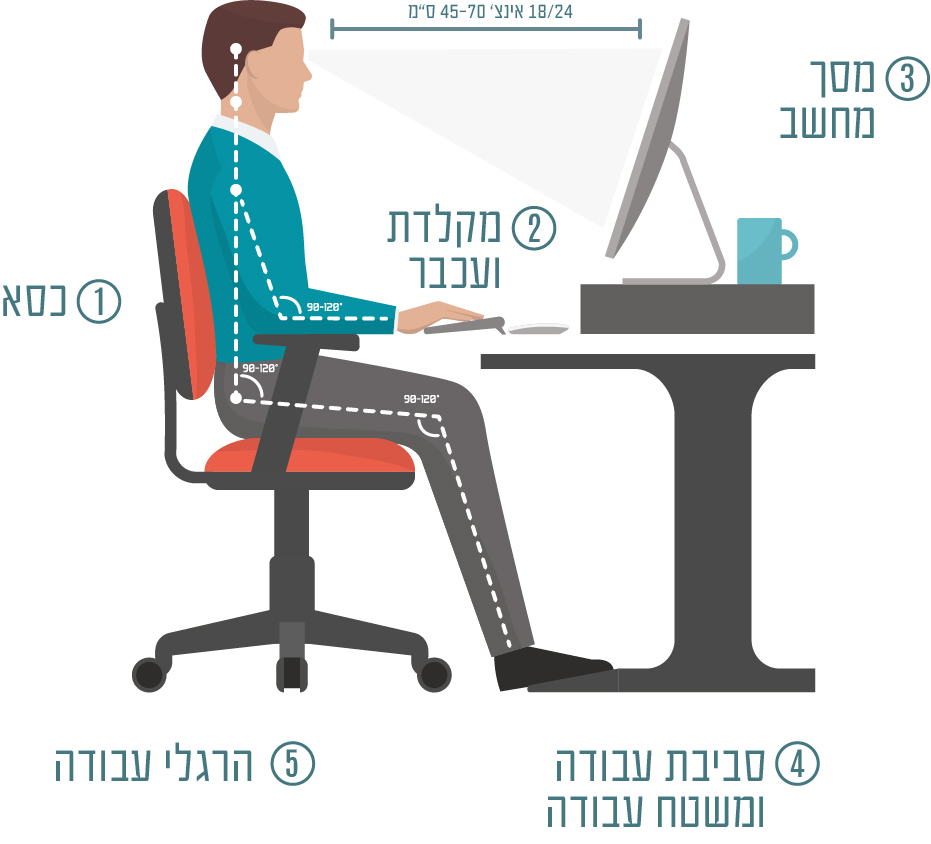
Seat height
- Adjust seat height so feet are flat on the floor or on footrest, knees are bent at right angles and thighs are horizontal to floor.
Seat Back
- Adjust seat back so it supports the lumbar curve of the spine. Backrest should come up to the top of shoulder blades
Seat Pan Depth
- Adjust seat pan depth so that there is a gap of about 4cm between edge of seat and back of knee
Seat Pan Tilt
- Adjust seat pan tilt so hips and tops of thighs are at right angles or greater.
Armrest position
- Adjust armrests so that they can be out the way while typing, but may provide support during other activities (i.e. phone use, meetings, etc.)
Keyboard Height
- Adjust keyboard height so arms and forearms are at right angles or slightly greater and forearms and hands form straight lines.
Keyboard-to-user distance
- Keyboard-to-user distance should allow user to relax shoulders with elbows hanging close to body.
Keyboard slope
- Position keyboard a flat or slightly negatively sloped
Mouse-to-user distance
- Mouse should be directly next to and on the same level as the keyboard..
Monitor height
- Adjust monitor height so top of screen is at or slightly lower than eye level.
Screen-to-user distance
- Viewing distance is approximately arm’s distance away (40-70 cm)
Monitor alignment
- Monitor and keyboard should be place directly in front of user.
Visual comfort of screen
- Monitor should be positioned to avoid glare (perpendicular to window or strong light source)
Leg clearance at workstation
- Width must be a few cm more than hip width. Height must be higher than highest point of thighs .Depth must allows proper sitting position while giving foot/knee movement.
Placement of frequently used items
- Advice employee to keep frequently used items (i.e. phone) close at hand.
- Use a document holder when spending significant time working from documents to screen
General task lighting
- Ensure lighting is not direct or overly bright.
Frequency of micro breaks
- Get out of chair at least once per hour, micro break every 30 minutes of keyboarding.
- Look away from your screen every 20 minutes.
- Stretch hourly
Keyboarding posture
- Keep wrists straight, avoid supporting wrists on any surface while typing.
Sitting posture
- Upright or slightly reclined posture, maintain hollow in lower back.
Phoning posture
- Avoid tilting head/neck to cradle the phone. Use hand to hold receiver.
Alternate tasks
- Break up long periods of continuous computer use by performing small tasks/errands.
